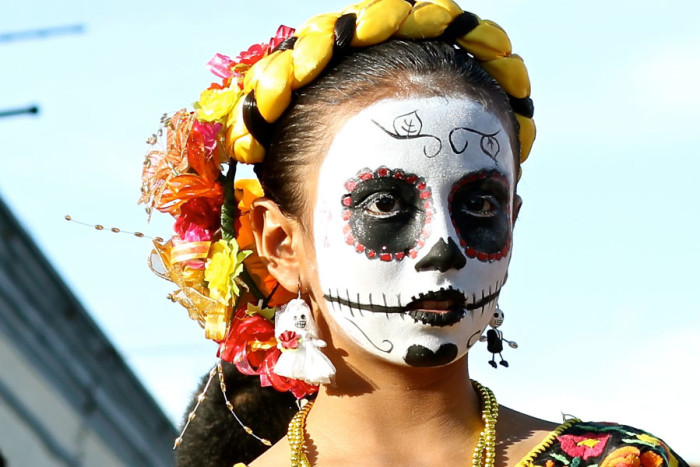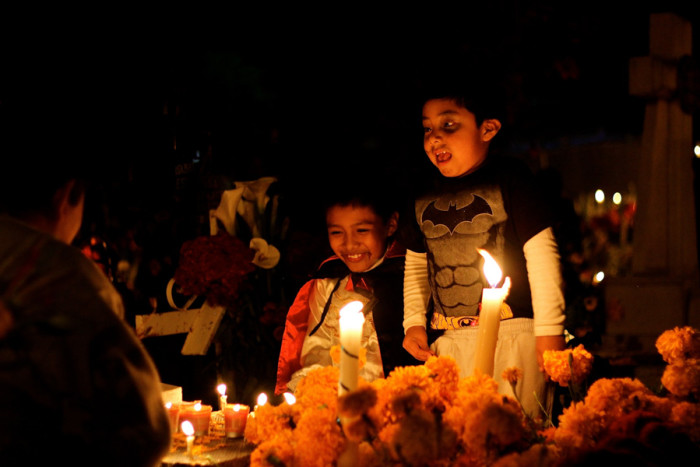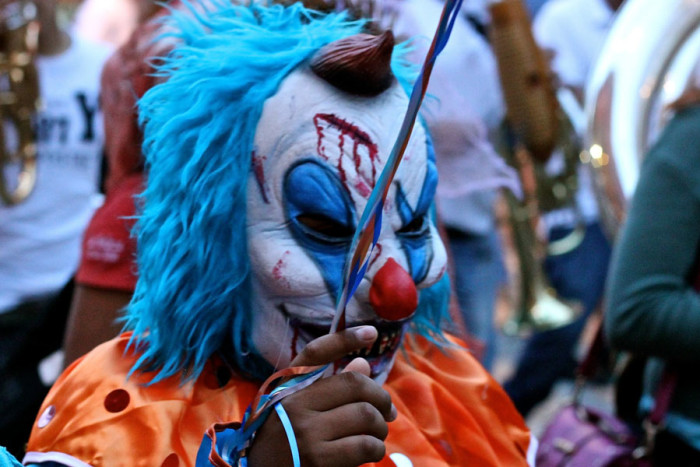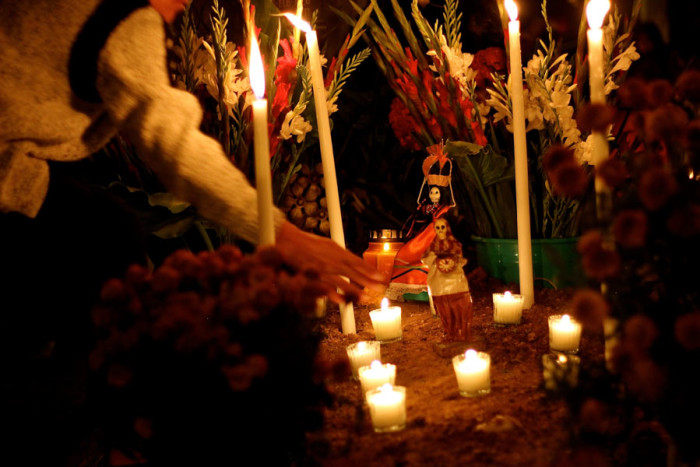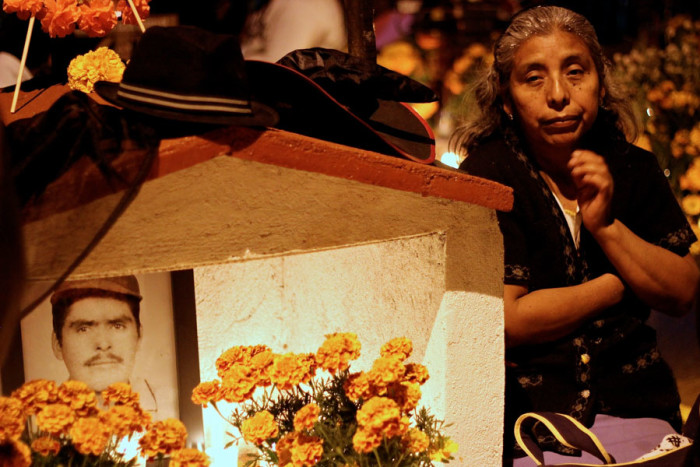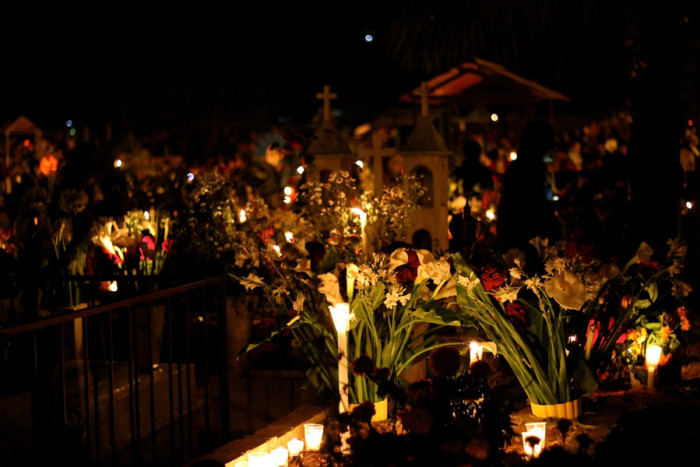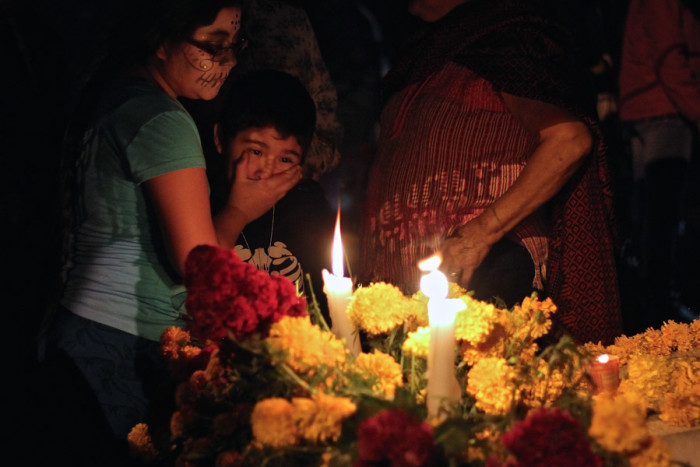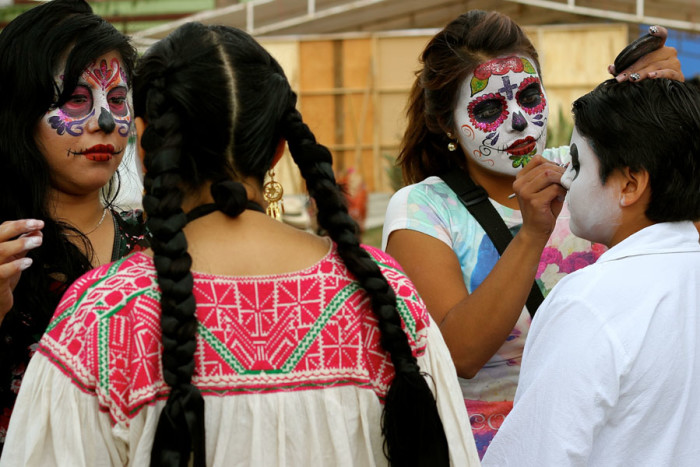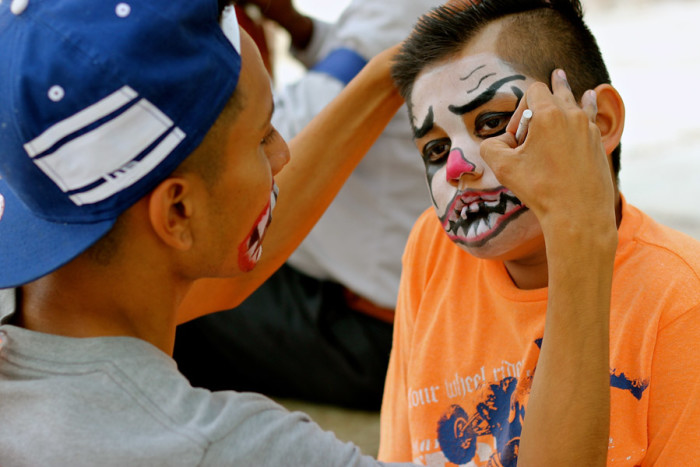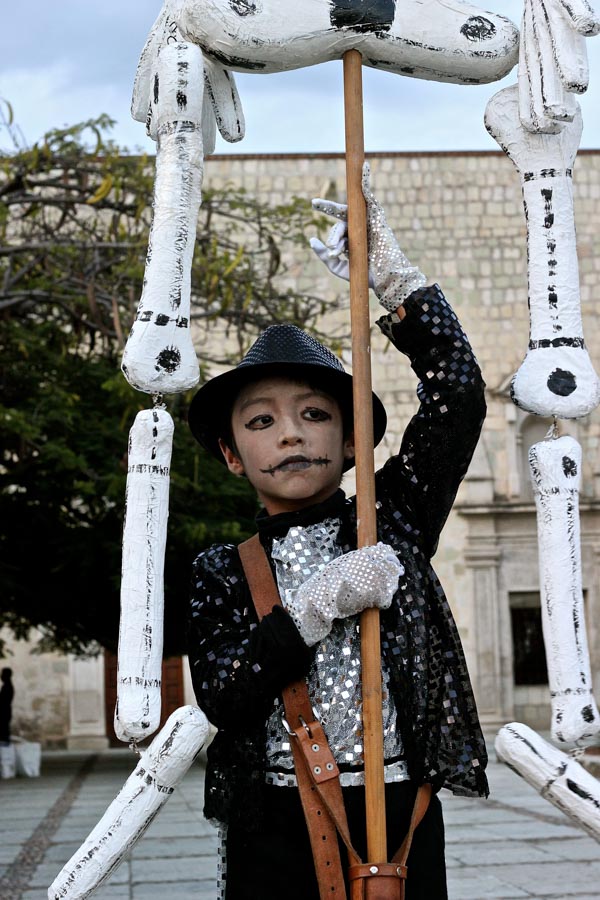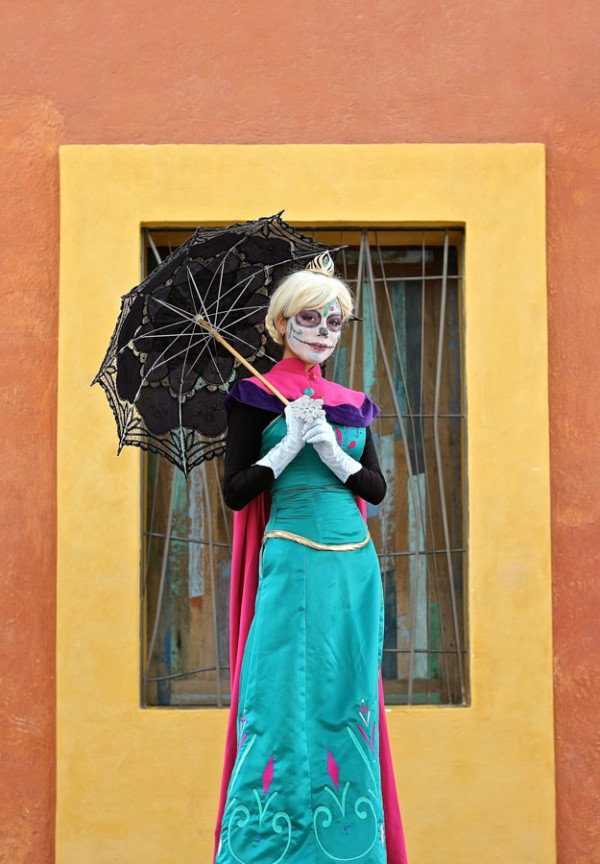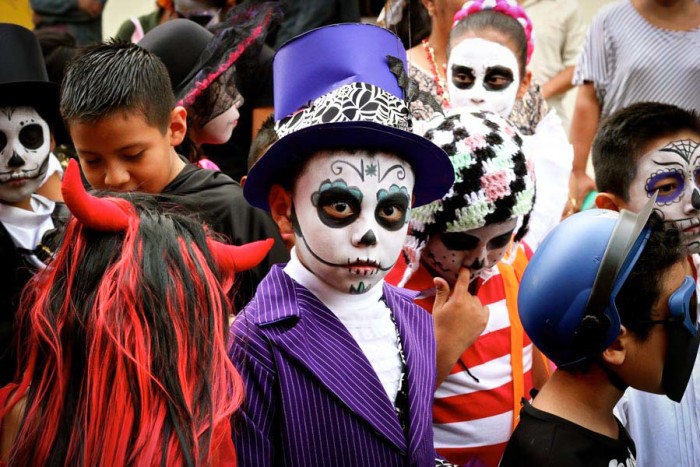
In the sprawling Xoxocotlan cemetery nestled in Oaxaca, Mexico, people with painted skull faces drink beer, light incense and tell stories around the graves of their loved ones.
The candlelit gravesite boomed with sound — mariachi bands, personal stereos playing hits, laughter. Dozens of tents line the site’s fence, offering everything from refried beans and cheese tlayudas to hotdogs. People place marigolds, mezcal, sugar skulls and other gifts as offerings to the deceased.
While Day of the Dead, which spans from Nov. 1 to 2, has commercialized or turned Halloween-like elsewhere in Mexico, Oaxaca remains a bit truer to the celebration’s roots. No movie stars, nurses or conventional Disney princesses marched along in the parades or gathered at the bars.
Most people paint their faces like La Calavera Catrina, or the elegant skull, an ode to the zinc etching drawn in the early 1900s by the famous Mexican artist José Guadalupe Posada. The female skeleton, adorned with a typical hat worn by an upper-class French woman at the time, satires the Mexican natives who Posada thought were desperate to adopt European aristocratic culture.
A far cry from Halloween, Day of the Dead is a two-day celebration of the spirits of the dead. Traditionally, on the first day, All Saints Day, children invite the angelitos, or spirits of dead children, to return to visit. On the second day, families honor the adult spirits.
Artisan Juan Toribio, born and raised in Oaxaca, said the festival is primarily to “remember those who have passed together — to remember them every year, every year, every year, so they’ll never be forgotten.”
“Every flower, loaf of bread or bottle of mezcal we leave for them serves as a beautiful gift,” Toribio said. “May they rest in peace.”
Cindy Ferrell, an English teacher from Seattle, said she understands how Americans may have trouble understanding the spirit of the festival. At home, celebrating death may sound morbid, but in Mexico and other Latin countries, the deep-seated tradition intends to honor both life and death.
Historians trace the festival’s origins to a centuries-old observance by the Aztecs. Thousands of years before that, indigenous groups in the country were thought to celebrate the death of ancestors with similar rituals.
Oaxaca has become somewhat of a hub for the event that draws visitors from all over. Ferrell said she came back to Oaxaca for a second time for the event because of the beauty of the traditions and culture.
“It’s incredible,” she said. “We have nothing like this at home. … People don’t even know where Halloween started.”
Benita Clemente, from the Mexican state of Mazatlán, travels to the festival each year to sell her vibrant, hand-woven bags and wallets. She said Oaxaca’s Día de Los Muertos celebration is special.
“Everyone comes here for it, because everyone loves it here,” she said. “All the cultures from all the different [Mexican] states can get together and share.”


